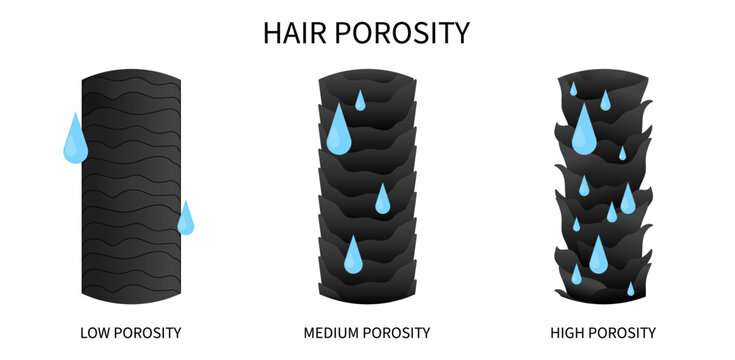
Image/ @traceeellisross
By Tara Young
Do you ever find that some products just don’t work for you, even if it’s recommended for your hair type? It could be a hair cream that wraps around the hair shaft to create a greasy layer or a hair oil that seeps into your hair which dries up and puffs out minutes later.
Alongside understanding your hair type and texture, knowing about your hair porosity could come in handy when selecting a new product or building a new hair regimen. A newfound knowledge of your hair porosity might just be the missing link to nailing that good hair day you’ve been hoping for and save you a couple of $$ in product trials along the way.
To understand Hair Porosity, a good place to start is the structure of your strands which are made up of three layers:
Medulla - The soft, innermost layer of the hair shaft
Cortex - The thickest layer of your hair containing proteins such as keratin that give hair its elasticity and strength and melanin, the pigment that gives your hair colour.
The cuticle - A thin, scaly, keratin-rich outer layer that is composed of cells layered over each other like tiles on a roof – and this layer is what determines how porous your hair is.
At its core, hair porosity refers to your hair's ability to absorb and retain moisture. Think of your hair like a sponge, soaking up water, products and treatments. But just like Sponge Bob, not all sponges are created equally and neither is our hair.

There are three main categories of hair porosity: low, medium, and high. Each type comes with its own set of characteristics and care requirements.
LOW POROSITY - Cuticles that are close together.
Low porosity hair tends to have tightly closed cuticles, making it resistant to moisture penetration. While this may sound like a dream for avoiding frizz, it also means that products can sit on the surface of the hair without being fully absorbed.
To combat this, low-porosity hair benefits from lightweight, water-based products that won't weigh it down. Using a clarifying shampoo can help open up the cuticle and allow moisture to penetrate more effectively, and protein-free conditioners that contain glycerin are easier to absorb and will cause less build-up.




MEDIUM POROSITY - Cuticles that are less tightly bound
Then there's medium porosity hair, which falls somewhere in between high and low porosity. It strikes a balance between absorbing moisture effectively and retaining it pretty well. Medium porosity hair tends to be the most manageable and versatile, making it easy to style, colour, quick to dry and over all look glossy and healthy.
HIGH POROSITY - Cuticles that are more widely spaced.
On the opposite end of the spectrum, high-porosity hair has cuticles that are spaced out, leading to rapid moisture absorption, frizz, dullness and tangles.
This type of hair often appears dry and frizzy as it struggles to retain moisture, making it prone to brittle strands and breakage. Highly porous hair is also notorious when it comes to maintaining colour because the gaps in the cuticle allow the pigment to escape much quicker. If your hair is coloured and porous, wash with a regimen that locks colour in whilst offering protection.
Protein treatments, leave-in conditioners, and sealing oils can work wonders for high-porosity hair as they help to repair and seal the gaps in the cuticles, reducing porosity and preventing moisture loss.
An Apple Cider Vinegar rinse helps to balance the hair's pH level and seals the cuticles, reducing porosity and promoting shine. If you're heart styling, use a heat protector to protect from heat damage.




HOW TO FIND OUT YOUR POROSITY LEVEL
So, how do you determine your hair's porosity? This test involves taking a few strands of clean hair and placing them in a bowl of water.
If the strands float on the surface, you likely have low porosity hair. If they sink quickly, you probably have high porosity hair. And if they sink slowly or remain suspended in the water, your hair's porosity is likely medium.
WHAT CAUSES HIGH OR LOW POROSITY HAIR?
Genetics - You can inherit low, medium, or high hair porosity from your parents and genetic DNA, just like we can inherit thick, thin, curly, or straight hair.
Hair Damage - This can lead to a higher porosity. Caused by such as excessive heat, chemicals, harsh products, friction and overwashing.
The Environment - Excessive sun, wind, and pollution can lead to high porosity.
Ageing - Like most parts of our bodies, as we age, our hair cuticle can lose some of its strength.
WHAT NOW?
Armed with this knowledge, you can tailor your hair care routine to suit your hair's specific needs. If you have high or low porosity due to genetics it’s probably going to stay that way but you can use certain products to make it more manageable and a dream to style. Pay attention to the ingredients in your products, opting for formulations that cater to your porosity level.

